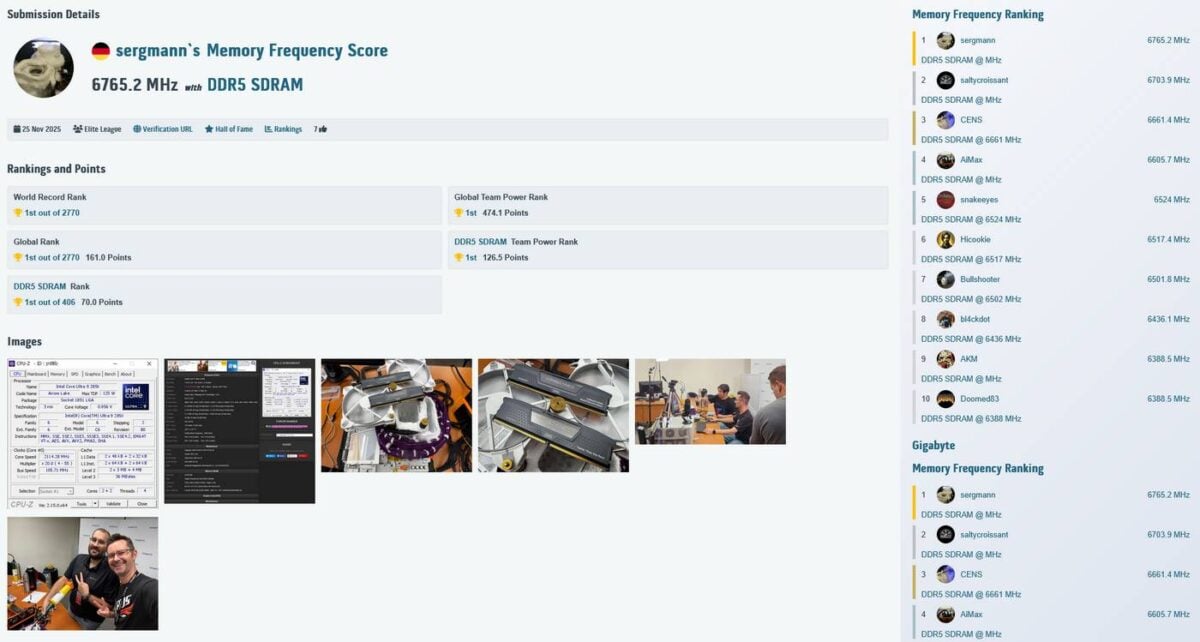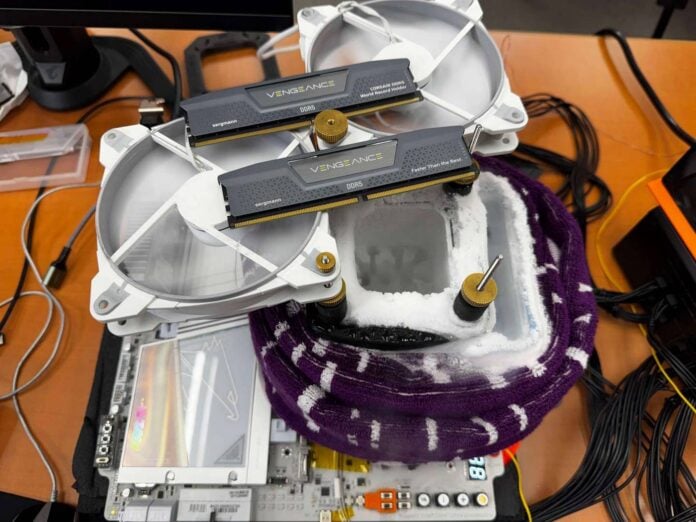A new DDR5 frequency world record has been achieved, pushing the bar up to a staggering 6,765.2MHz, or 13,530MT/s in more common parlance. This breakthrough was obtained by overclocker Sergmann, with the help of HiCookie and Gigabyte, marking a 122.6 MT/s lead over the previous record holder, saltycroissant. Though this difference may sound small, it takes a lot of dedication and knowledge to pull off, not to forget loads of super-cool Liquid Nitrogen.
Just a month ago, we were talking about the first validated memory OC crossing the 13,000MT/s milestone, which was also achieved by Sergmann. Today, the German overclocker is halfway towards the next milestone. At the current rate of advancement, we expect the 14,000MT/s landmark to be crossed sometime next year, assuming it’s possible in the first place.
To make this a reality, Sergmann leveraged the great memory handling of Intel’s Core Ultra 200 series, specifically the Core Ultra 9 285K. The CPU was coupled with a single 24GB module of Corsair’s Vengeance DDR5-8000 CL38-48-48-98 memory (model: cmk48gx5m2x8000c38), installed on Gigabyte’s Z890 Aorus Tachyon Ice motherboard. Aside from the RAM, which changes from one record to the other, this CPU and motherboard combo remains the go-to option for many hardcore overclockers.
The Tachyon Ice was purpose-built to conquer world records. Though its 18+1+2 phase VRM solution wasn’t needed this time, its optimised memory layout, which is advertised for up to 9,500 MT/s out-of-the-box, played an important role in maintaining the signal integrity required for such extreme speeds.

As usual, the CPU was reduced to a 2 P-cores plus 2 E-cores configuration clocked at 2.1GHz, using a x20 multiplier and a 105.71MHz base frequency (BCLK). For those unfamiliar, the reason behind this is to remove any potential instability that could be caused by high CPU clocks.
With everything laid down for memory overclocking, Sergmann managed to push this DDR5-8000 up by 5,530MT/s above its official spec, hitting 13,530MT/s at CL68-127-127-127-2 timings and a ratio of 3:192. Yes, these timings are not great for regular use, neither is the frequency, which is probably only stable enough to validate the achievement. But still, it shows that there is room to improve DDR5 speed further.
Once more, a great achievement by Sergmann, HiCookie, and Gigabyte. We can’t wait to see who’s going to be the first to cross 14,000MT/s. Hopefully, before DRAM prices reach a similar milestone.


